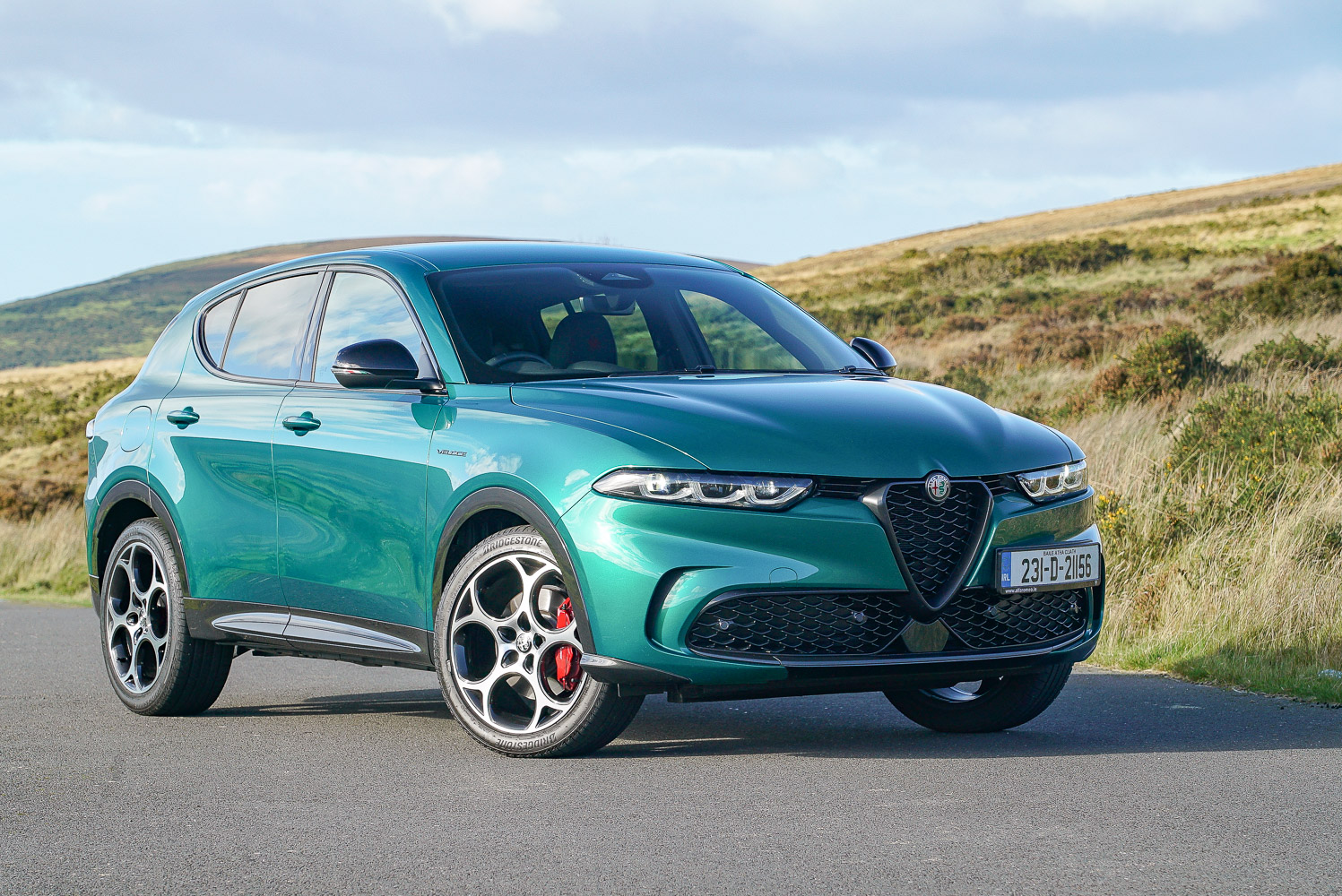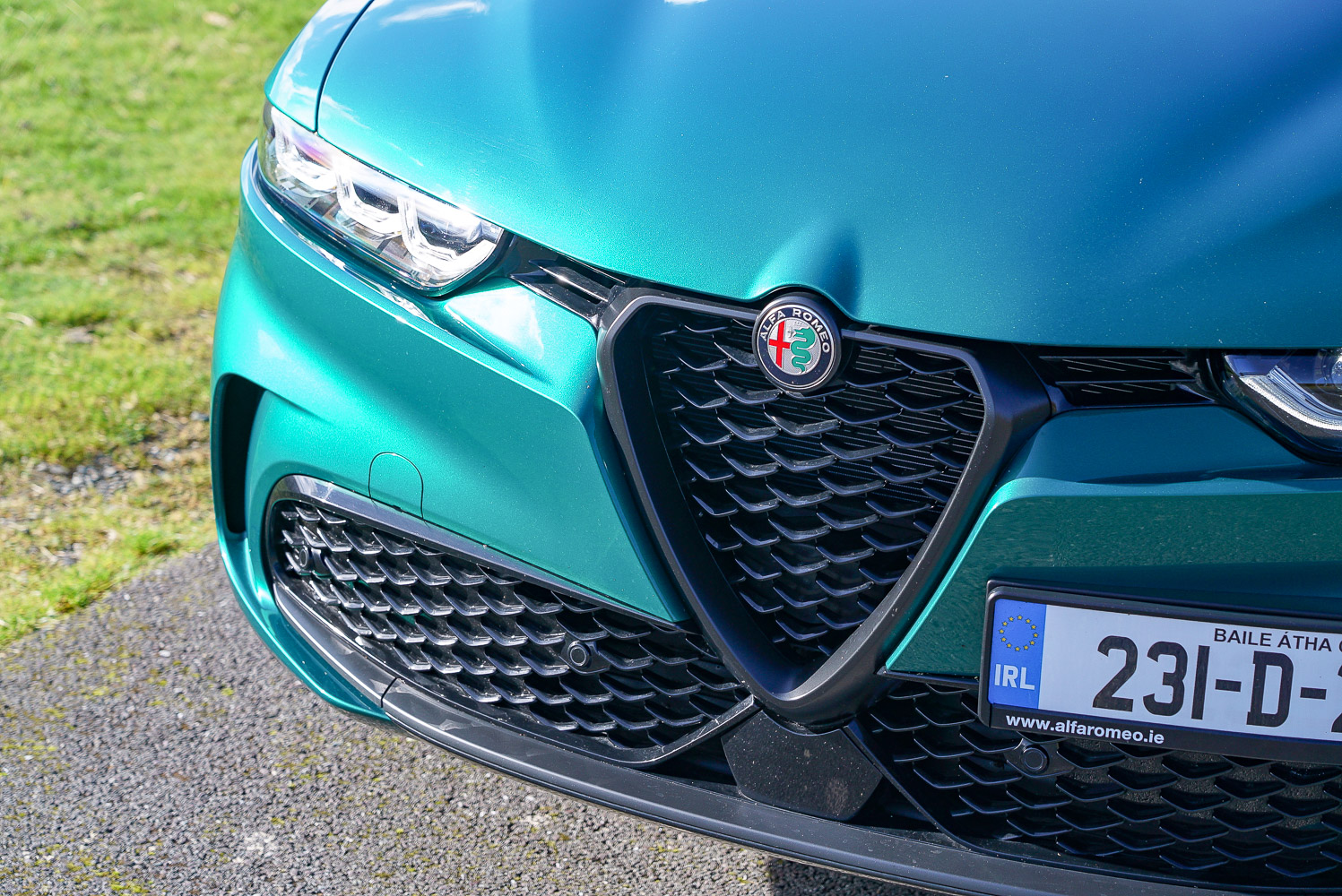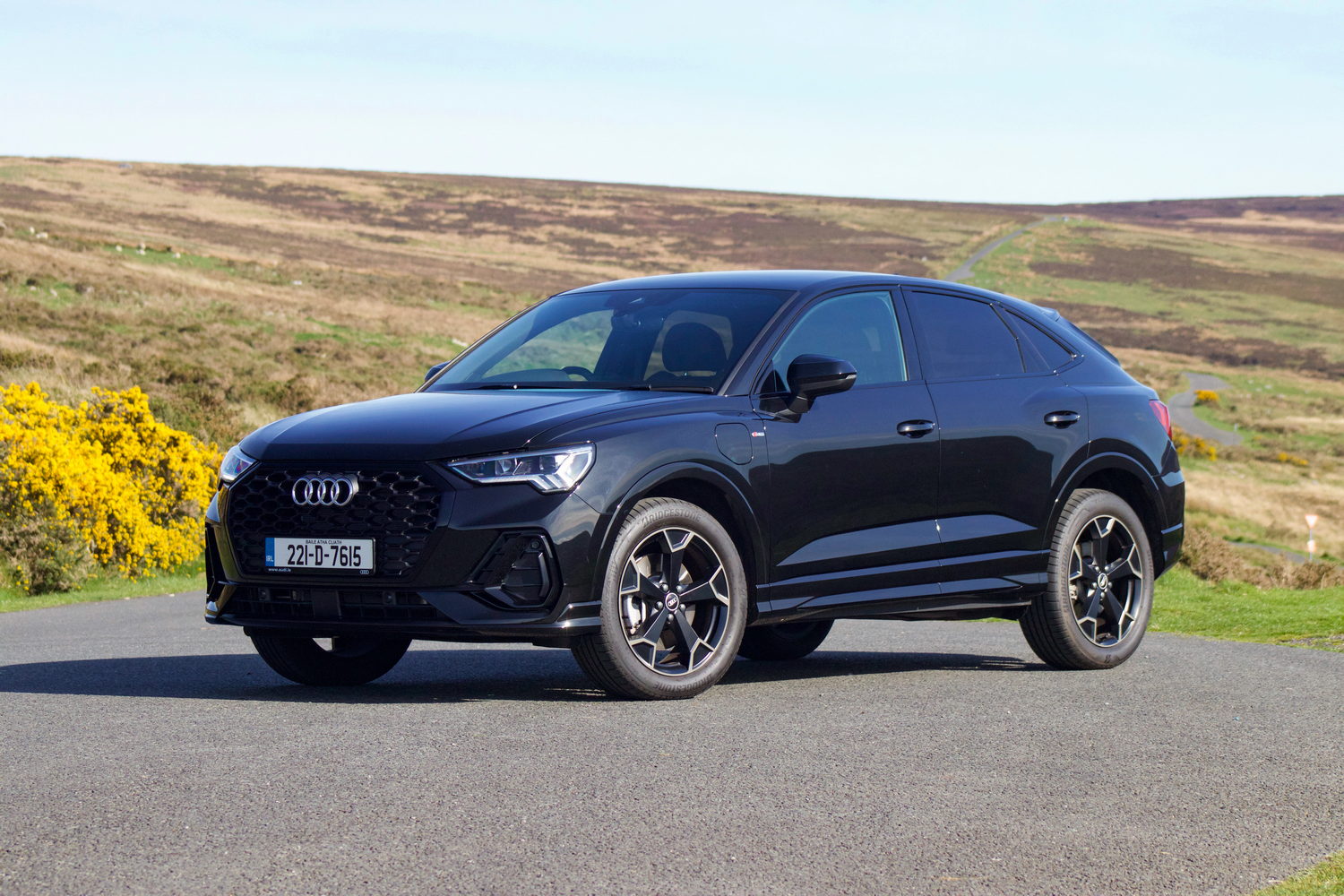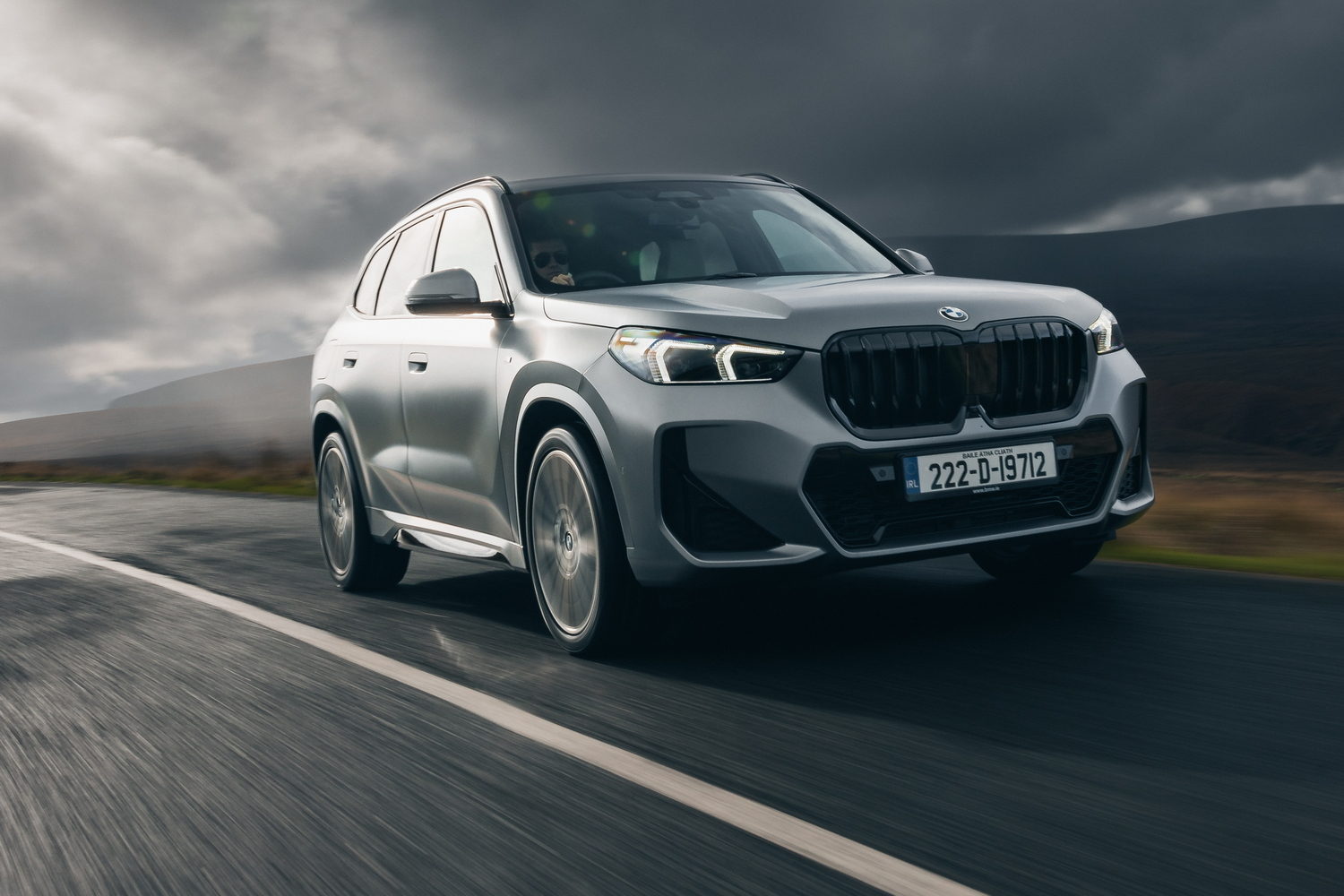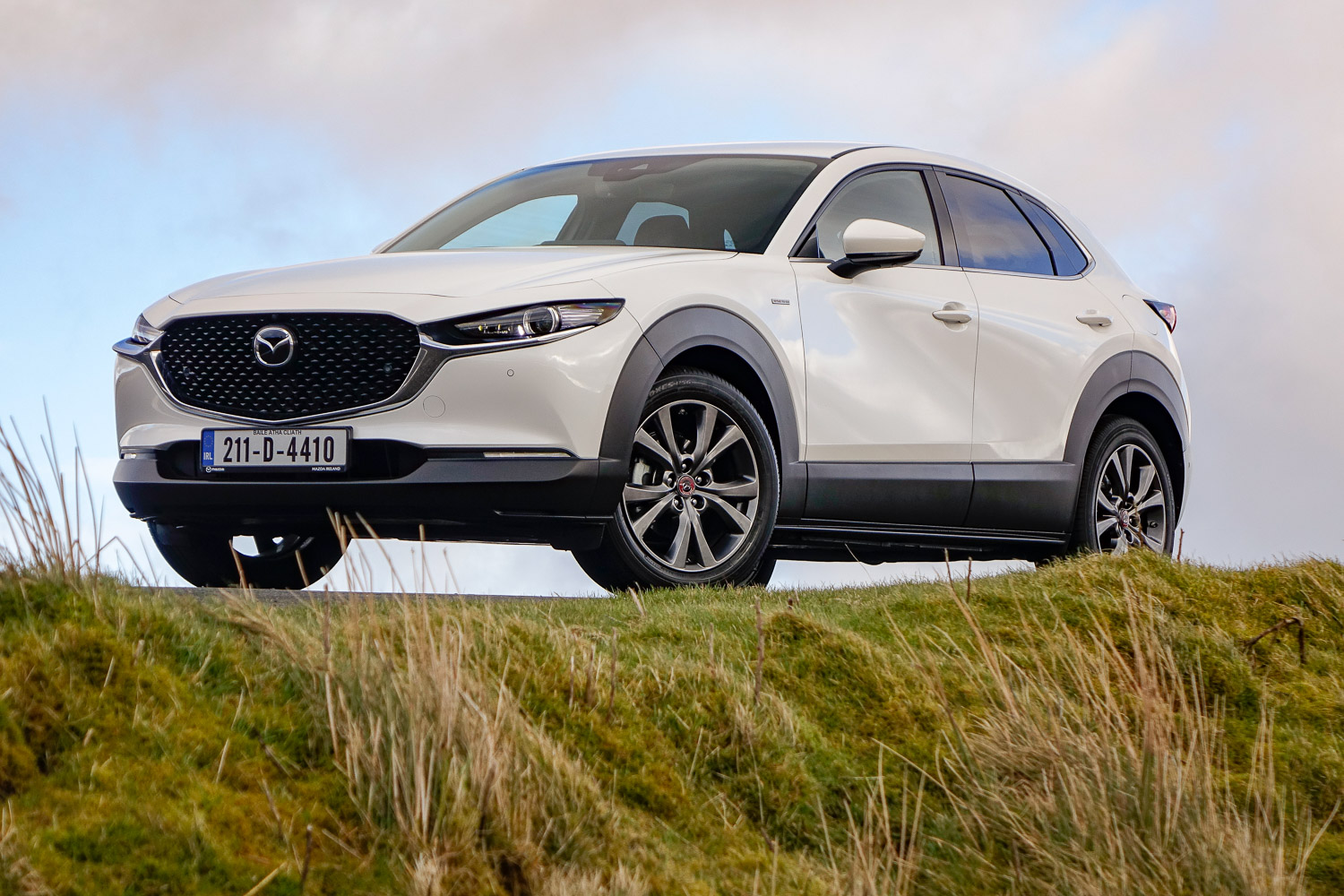Alfa Romeo Tonale overview
So many times we've heard the phrase 'make or break car for Alfa' that actually it's rather refreshing to report that the Alfa Romeo Tonale is no such thing. It's an important car, sure - pushing Alfa into a hugely important space in the market, one where it hasn't been represented before. It just so happens to be a market segment that's much more oriented towards female buyers, which again is territory to which Alfa is relatively unaccustomed.
But make or break? Nope. Alfa is riding a rising tide of sales across Europe right now, thanks mostly to the Tonale, and it's making tidy profits. It's gearing up to be an all-electric brand as soon as 2027, and the Tonale is a key step on that road as it's the first Alfa model to be offered only in hybrid forms. We've already driven the 280hp plug-in hybrid, and now here's a chance to get to know the 1.5 mild-hybrid on Irish roads.
Referring to it as a mild-hybrid slightly under-sells it, as the Tonale's hybrid system is rather more robust, and more capable of zero-emissions running around town, than most mild-hybrids. Think of it as a half-way house between a mild-hybrid and a more traditional Toyota-style hybrid.
It's also gorgeous. OK, I know that beauty is deeply subjective and that it's reliant entirely on the beholder's eye, but it would be remiss of me not to mention the Tonale's exceptionally handsome styling. In a corner of the market better known for fairly bland design the Tonale, with its triple-element headlights that reference the 1980s Alfa SZ coupe, is really rather lovely to behold.
It's helped by the vibrant green of our test car, which is called Montreal Green. It's a reference not to the city in Quebec, nor the Grand Prix which is held there, but to Alfa's stunning front-engined V8 coupe of the 1970s, which was oft-painted with just such a hue. But moving back to the here and now, how does this Tonale 1.5 hybrid perform on Irish roads?
The Alfa Romeo Tonale model range
The Alfa Romeo Tonale has two primary trim levels, with a third add-on one. The range starts with the Ti models, which have a starting price of €49,995 for the 1.5 hybrid. Standard equipment includes 18-inch diamond-cut alloy wheels, dual-zone air conditioning, a reversing camera, front and rear parking sensors, a 12.3-inch digital instrument cluster, keyless ignition, full LED headlights, a leather-wrapped sports steering wheel and a wireless phone charging pad, not to forget the 10.25-inch touchscreen infotainment system with CarPlay, Android Auto and Alfa Connect online services.
You can upgrade to a Veloce model for €53,495 and that brings with it 19-inch diamond-cut alloy wheels, adaptive damping, aluminium pedals, aluminium paddle shifts, blacked-out exterior trim, privacy glass and red-painted Brembo brake calipers.
If you want the plug-in hybrid version in Ti spec, that'll be €55,495, or it's €58,495 as a Veloce.
There's also an upgrade available, called Edizione Speciale. It's only available for the PHEV version and brings it more or less from Ti up to Veloce spec, but with 20-inch alloy wheels, and adds some titanium-effect exterior trim. It costs €57,250.
All Tonale models come with comprehensive safety equipment, including adaptive cruise control, six airbags, auto headlamps and wipers, 'inter-urban' autonomous emergency braking with pedestrian and cyclist detection, drowsy driver detection, lane-keeping steering and an intelligent speed assistant. The Tonale received a five-star rating from Euro NCAP for safety, including an 83 per cent adult occupant protection rating, 85 per cent for child occupants and 67 per cent for vulnerable road users.
The Alfa Romeo Tonale interior
While the Tonale might be breaking new ground for Alfa Romeo, the interior goes heavy on the heritage. The main instruments are rather delightful, rendered in high definition on a screen that's tucked beneath a traditional hooded binnacle. There are three different layouts available, accessed by touching a button at the end of the wiper stalk (which seems an odd place to put it, but then Alfa used to put heating controls on column stalks, once upon a time) and the best one is that which replicates the analogue instruments of a 1960s GTV coupe. Delicious.
In the 10.25-inch screen in the centre, the graphics are equally sharp, and the menu layout fairly easy to navigate, but it renders the buttons for various functions slightly too small, so they're easy to miss when you're trying to stab at them. It does help that the heating and air conditioning controls are done by proper physical switches below the screen, and these are not merely simple to use, but they look and feel good too.
Want to know what feels even better? The solid aluminium gearshift paddles for the seven-speed dual-clutch gearbox. These look as good as they feel and put the fragile plastic gearshift paddles used by most other marques to utter shame. The three-spoke steering wheel looks and feels good too, and we like the affectation of having the engine stop-start button mounted on the left-hand spoke.
Down below the air conditioning controls is an open storage area which is also home to a large wireless phone charging pad. To the right of this is the rotary 'DNA' controller which adjusts the Tonale's driving modes. Down on the centre console, there are two cupholders and the automatic gear selector. There's a useful storage bin under the adjustable armrest, and a good-sized glovebox, too, but the door bins are a little small.
The front seats are lovely, and in our Veloce test car were finished in a soft suede-like material that felt much more satisfying and welcoming than leather. It didn't hurt that their black cloth was set off by contrasting red stitching and the Alfa Romeo logo stitched into the headrests.
If you're bringing on board electronic devices, you're well-catered for. Aside from the already-mentioned wireless charging pad, there are also two USB sockets in the front (one Type-A and one Type-C), and these are replicated in the back.
Speaking of the back... It's roomier back there than you think at first. Certainly, headroom and legroom are adequate, but the dark colour scheme and the shallow side windows make it seem smaller than it really is.
The Tonale 1.5 Hybrid does have one big advantage over its PHEV cousin - its boot is much bigger. Because it doesn't have to package a big plug-in hybrid battery it can offer 500 litres of storage with the back seats up (about the same as you get in a BMW X1, slightly less than you get in the standard Audi Q3) or 1,550 litres with the seats folded down, which is easy enough to do.
We need to mention quality because it's much better than you might be expecting. In fact, this is an Alfa that can hold its head up high in terms of perceived quality compared to its German competition. It all feels well stuck together, and the materials used in the cabin are generally very good.
The Alfa Romeo Tonale Hybrid driving experience
The Tonale is not a car that does well on first driving impressions. In fact, for the first little while with it you're likely to conclude that it feels unnecessarily jerky and ill-considered. Definitely, there's an issue with the car's calibration, which just doesn't seem to allow for an entirely smooth transition from electric to petrol power and given that in A (Advanced Economy) and N (Natural) driving modes, the system seems determined to default to electric at every opportunity, that's not great news.
That said, you do start to adapt to it, and although the throttle pedal never feels anything but numb and inconsistent in its responses (something that afflicts the PHEV version to an even greater extent) the Tonale 1.5 starts to come together the more time you spend with it. That 1.5 petrol engine is gruff more than it is musical, but it pulls strongly, especially with the 20hp and 55Nm of torque that the 48-volt electric motor is adding to the party. As noted earlier, by mild-hybrid standards this system sometimes seems closer to being a full hybrid, and you can tickle it along in heavy traffic on just the electric motor for surprisingly extended periods. That doubtless contributes to the decent 6.5 litres per 100km fuel consumption we recorded, which is very close to the official number.
Twist the rotary controller to D for Dynamic and many of these problems go away. Now the Tonale feels much more responsive and zippier. The suspension's adaptive dampers stiffen up too, although you can push a button in the centre of the DNA controller to select a softer damper mode - technology lifted directly from Ferrari. To be fair, even in D mode with the stiff dampers, the Tonale never feels overly harsh, although in any mode it can get caught out by urban ripples.
It's so much happier, and so much better, on the open road. Find a road with some decent corners and the Tonale really rises to the challenge. The steering is rather over-light (again, some of that goes away in Dynamic mode), but there's surprisingly good feedback through the rim of the steering wheel, and the Tonale feels agile and 'chuckable' on the right road. Only slightly weak brakes let the dynamic performance down, added to which if you have big feet, you'll often find your toes catching on the trim at the base of the steering column when you go for the brake pedal. Maybe invest in some nice snug-fitting driving shoes.
Overall refinement is relatively good, but the Tonale is not as quiet inside as a BMW X1 nor a Mercedes GLA. The gearbox could do with tweaking as well - it's occasionally awkward in its shifts, often leaving the revs hanging on too long, but at least that gives you an excuse to use those wonderful paddle shifters.
Does that mean it's a disappointment, in driving terms? Not necessarily. You can sense Alfa straining against the leash of its history to ignore all that driving fun stuff and just get on with providing the sort of bland-driving crossover that most people seem to want these days. But it can't quite manage that, and instead delivers a complex car that's better to drive than you think at first, and which rewards time spent behind the wheel getting to know it better, especially on the right road.
Our verdict on the Alfa Romeo Tonale Hybrid
Is the Alfa Romeo Tonale 1.5 flawed? Well of course it is, Alfa doesn't do flawless, but it does do pretty and interesting and in a corner of the market largely populated with truly dull rival crossovers, the Tonale makes a case for itself by being more fun to drive than you might expect, and far better looking than almost any other car in the sector. Take some time to get to know it, and you'll find the rewards are there.
What do the rest of the team think?
It's difficult not to be seduced by the Tonale's exterior and interior design. It brings a little much-needed Italian exotica to a traditionally conservative market sector and for that alone we're happy it exists. No, the driving experience isn't top-drawer, but those that like driving will get on well with it and it's quite efficient, too. In summary, its upsides outweigh its foibles by enough of a margin for it to be seriously considered in this busy part of the car market.
Shane O' Donoghue - Editor

